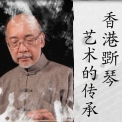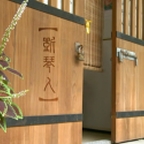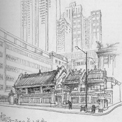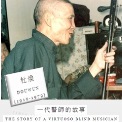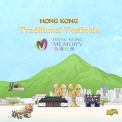-
History & Society
- Education in Pre-war Hong Kong
- History of Taikoo Sugar Refinery
- Hong Kong Products Exhibition
- Local Festivals Around the Year
- Post-war Industries
- Pre-war Industry
- The Hong Kong Jockey Club Archives
- Tin Hau Festival
- Memories We Share: Hong Kong in the 1960s and 1970s
- History in Miniature: The 150th Anniversary of Stamp Issuance in Hong Kong
- A Partnership with the People: KAAA and Post-war Agricultural Hong Kong
- The Oral Legacies (I) - Intangible Cultural Heritage of Hong Kong
- Hong Kong Currency
- Hong Kong, Benevolent City: Tung Wah and the Growth of Chinese Communities
- The Oral Legacies Series II: the Representative List of the Intangible Cultural Heritage of Hong Kong
- Braving the Storm: Hong Kong under Japanese Occupation
- A Century of Fashion: Hong Kong Cheongsam Story
Geography & EnvironmentArt & Culture- Calendar Posters of Kwan Wai-nung
- Festival of Hong Kong
- Ho Sau: Poetic Photography of Daily Life
- Hong Kong Cemetery
- Sketches by Kong Kai-ming
- The Culture of Bamboo Scaffolding
- The Legend of Silk and Wood: A Hong Kong Qin Story
- Journeys of Leung Ping Kwan
- From Soya Bean Milk To Pu'er Tea
- Applauding Hong Kong Pop Legend: Roman Tam
- 他 FASHION 傳奇 EDDIE LAU 她 IMAGE 百變 劉培基
- A Eulogy of Hong Kong Landscape in Painting: The Art of Huang Bore
- Imprint of the Heart: Artistic Journey of Huang Xinbo
- Porcelain and Painting
- A Voice for the Ages, a Master of his Art – A Tribute to Lam Kar Sing
- Memories of Renowned Lyricist: Richard Lam Chun Keung's Manuscripts
- Seal Carving in Lingnan
- Literary Giant - Jin Yong and Louis Cha
-
History & SocietyGeography & EnvironmentArt & Culture
-
View Oral History RecordsFeatured StoriesAbout Hong Kong Voices
-
Hong Kong MemoryThe Legend of Silk and Wood: A Hong Kong Qin StoryRecently Visited
Xu Wenjing and Choi Chang-sau
Xu Wenjing and Choi Chang-sau
Similar to other traditional crafts, the skills and techniques of qin making have been passed down through generations of qin players and makers via hands-on, mentor-apprentice instruction.
Xu Wenjing
Xu Wenjing, a native of Zhejiang, is the most significant figure in bringing the art of qin making to Hong Kong. Xu learned how to play and make qin from his elder brother, Xu Yuanbai, and his brother’s teacher, the Buddhist monk of Tianpingshan in Suzhou, Daxiu. Xu moved to Hong Kong in 1949 and passed on the techniques of qin playing to Tang Siu-wa and qin making to Choi Chang-sau in the 1950s, thus planting the root of the Xu’s lineage in the art of qin making in Hong Kong.
In addition to the art of qin, Xu Wenjing was also proficient in calligraphy, painting, poetry and seal carving. Xu published a book on philology titled Guzhou Huibian (Collection of Ancient Seal Script) and a collection of poems called Xihu Baiyi (A Hundred Memories of the West Lake).
Choi Chang-sau
Choi Chang-sau is a native of Chaozhou. His grandfather, Choi Chun-fook, and his father, Choi Wai-king, operated a family business in musical instruments. Between the 1950s and 1960s, the Mainland was enforcing an “instrumental reform”, or remodeling of musical instruments. The traditional qin was criticized for both its form and its musical tradition. By the time of the Cultural Revolution, qin as a musical art was at its trough. Fortunately, its timely transplant in Hong Kong ensured its continuum, through Choi Chang-sau who kept practicing qin making according to the traditional methods and continued to serve both local and overseas qin musicians.
Now in his eighties, Choi Chang-sau still insists on transmitting the art of qin making to Hong Kong’s qin musicians every week by passing down the skills he learnt from his teacher, Xu Wenjing through verbal teaching plus demonstration. He has thus reinstated the tradition of creating one’s own instrument among qin players and ensured its status as an ongoing heritage.
Videos
Copyright © 2012 Hong Kong Memory. All rights reserved.






